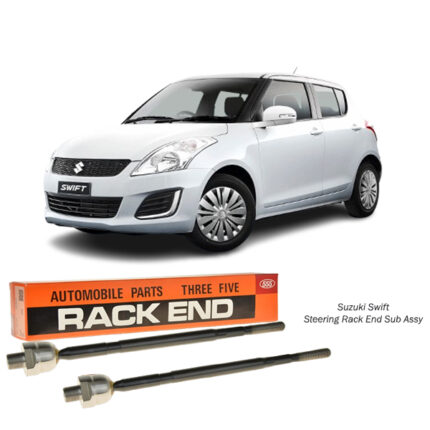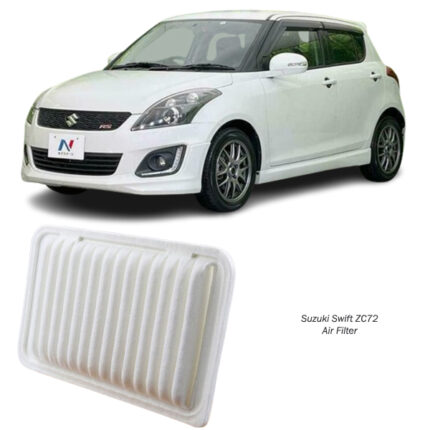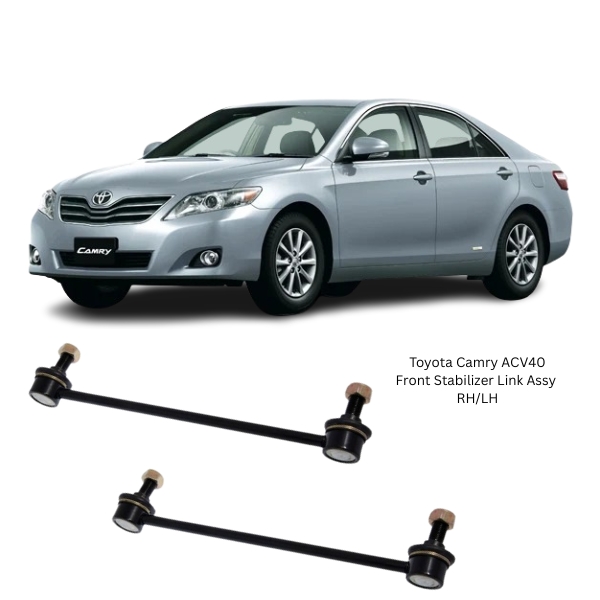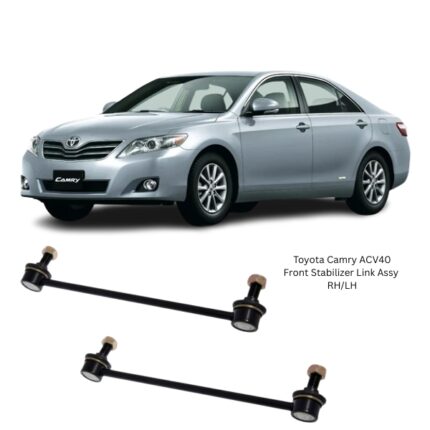Get Toyota Camry ACV40 Front Stabilizer Link Assy RH/LH 0123-ACV40F in Kenya
The Front Stabilizer Link Assembly RH/LH—also known as a sway bar link or anti-roll bar link—is a vital component in the front suspension system. Positioned between the stabilizer bar and the suspension strut or control arm, the stabilizer link helps reduce body roll, improve handling, and maintain tire contact with the road during cornering or uneven driving conditions.
Installed on both the right-hand (RH) and left-hand (LH) sides, these assemblies work in tandem to transmit motion from one side of the suspension to the other, equalizing forces and enhancing stability. Their role becomes especially evident during cornering, where they resist excessive body lean and help keep the vehicle flat and responsive.
Construction and Key Components
The Front Stabilizer Link Assembly RH/LH is constructed from durable materials engineered for strength, flexibility, and longevity. Its typical structure includes:
-
Link Rod or Shaft: Made from steel or aluminum, the rod forms the backbone of the stabilizer link and connects the two ball joints at either end.
-
Ball Joints or Bushings: These pivoting joints allow for articulation between the stabilizer bar and suspension components, accommodating movement without binding.
-
Protective Boots: Rubber dust boots cover the ball joints to prevent contamination from dirt, debris, and moisture.
-
Threaded Studs and Nuts: Located at each end for secure attachment to the sway bar and the suspension arm or strut.
-
Corrosion-Resistant Coating: Zinc plating, powder coating, or phosphate treatments provide protection against rust and road chemicals.
Some stabilizer links are solid steel rods, while others are hollow or include built-in damping materials to reduce noise and vibration.
Function and Operation
The stabilizer link’s function is simple yet crucial. It transfers forces from the stabilizer bar to the suspension system to:
-
Minimize Body Roll: By connecting the sway bar to the suspension, the stabilizer link ensures that forces from one side of the vehicle are shared with the other, reducing tilt during cornering.
-
Enhance Cornering Stability: Helps keep all tires in contact with the road for improved grip and control.
-
Improve Ride Comfort: Prevents excessive movement and provides a smoother, more composed driving experience.
-
Maintain Suspension Geometry: Works with other suspension components to preserve consistent wheel alignment and behavior under dynamic loads.
By stabilizing the chassis during directional changes, the link contributes significantly to safety and driver confidence.
Benefits of High-Quality Stabilizer Link Assemblies
Using high-performance stabilizer links on both RH and LH sides brings several key benefits:
-
Enhanced Handling Performance: Reduces body sway for more predictable and responsive steering.
-
Improved Safety: Maintains better tire contact and reduces the risk of vehicle instability during emergency maneuvers.
-
Reduced Noise and Vibration: Premium joints and bushings absorb road shock and minimize suspension noise.
-
Long-Lasting Durability: Designed to withstand repeated flexing, impacts, and environmental wear.
-
Compatibility with Modern Suspensions: Engineered for precision fit with a wide range of suspension designs and materials.
These links contribute to overall ride quality, making them essential to suspension integrity.
Symptoms of Worn or Failing Stabilizer Links
Stabilizer links operate under constant motion and load, making them susceptible to wear. Common signs of failure include:
-
Clunking or Rattling Noise: Often heard during cornering or when driving over bumps. This is caused by looseness in the joints or worn bushings.
-
Excessive Body Roll: A noticeable increase in vehicle lean when turning can indicate disconnected or failed stabilizer links.
-
Poor Handling or Steering Response: Worn links reduce the effectiveness of the sway bar, leading to vague steering and delayed response.
-
Uneven Tire Wear: Can occur if suspension geometry is affected by faulty stabilizer links.
-
Visual Damage: Cracked or torn dust boots, corroded rods, or loose joints are visible signs that replacement is needed.
Ignoring these symptoms may lead to suspension imbalance, poor ride quality, and accelerated wear on surrounding components.
Installation and Replacement
Replacing the Front Stabilizer Link Assembly RH/LH is relatively straightforward, but precision and proper technique are essential for optimal performance. General installation steps include:
-
Lift the Vehicle Safely: Use jack stands to elevate the front end and ensure the wheels are off the ground.
-
Remove the Old Link: Loosen and remove the nuts at both ends of the stabilizer link. Some may require a hex key or Torx bit to hold the stud while loosening the nut.
-
Inspect Mounting Points: Check the sway bar and suspension attachment points for wear or damage.
-
Install the New Link: Position the new link in place and thread the nuts by hand before tightening to specified torque settings.
-
Repeat on Opposite Side: Stabilizer links should always be replaced in pairs to maintain suspension balance.
-
Test Drive and Inspect: Ensure there are no noises or handling issues after installation.
While replacement may be done at home with the right tools, professional alignment and inspection are recommended for vehicles with complex suspension setups.
Maintenance and Longevity
Though stabilizer links are generally maintenance-free, regular inspection extends their service life and keeps the suspension system operating at its best:
-
Visual Checks During Routine Service: Look for torn boots, rust, or looseness.
-
Listen for Suspension Noises: Unusual sounds during turns or over bumps can indicate worn links.
-
Avoid Overloading the Suspension: Carrying heavy loads or aggressive driving over uneven terrain can accelerate wear.
-
Replace in Pairs: Even if only one side is damaged, replacing both RH and LH links ensures balanced suspension function.
Routine maintenance can prevent premature failure and improve the consistency of the ride and handling.
Fitment and Compatibility
Correct fitment is vital. Each stabilizer link assembly must match the dimensions, joint angles, and thread sizes specified for the suspension system. Using an incorrectly sized link can lead to:
-
Suspension misalignment
-
Reduced sway bar effectiveness
-
Premature failure of joints
-
Noise and ride disturbances
Always confirm RH (right-hand) and LH (left-hand) side orientation and length before installation. Quality aftermarket and OE-equivalent links are built to exact specifications to ensure compatibility and performance.
Follow us on Facebook for more parts.




